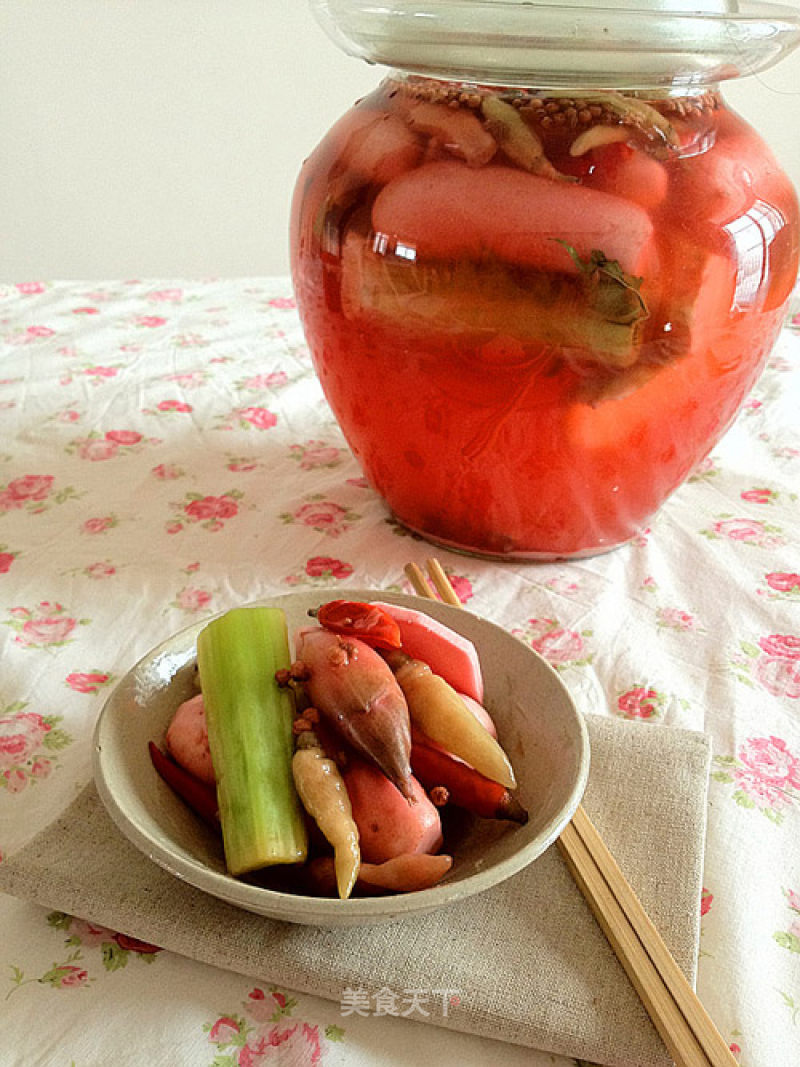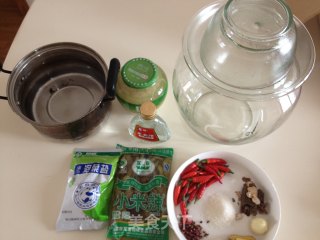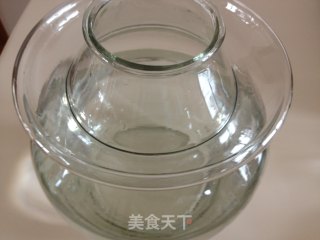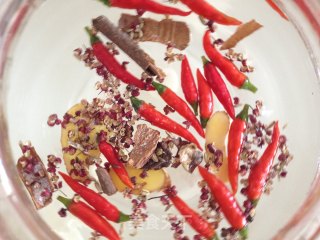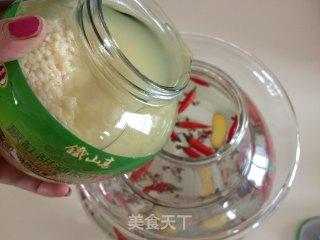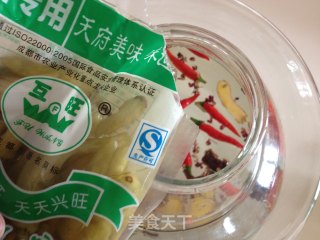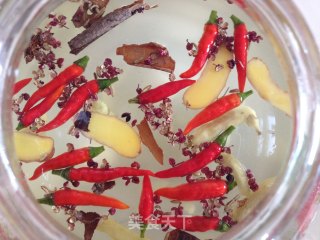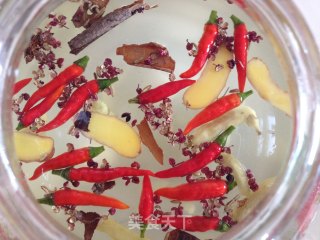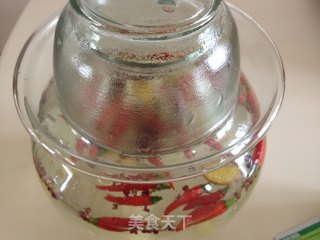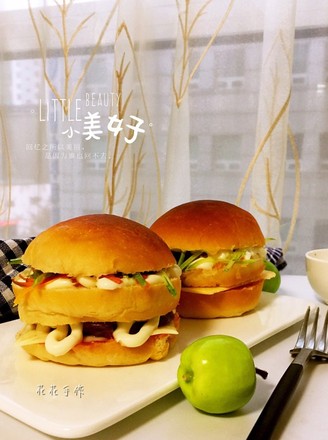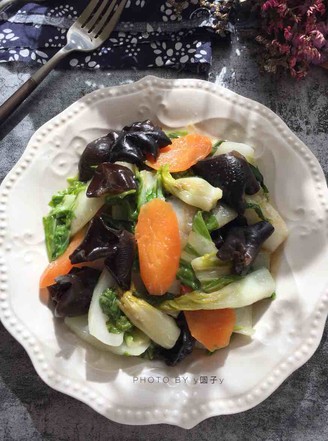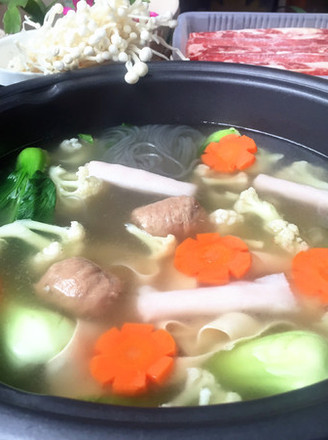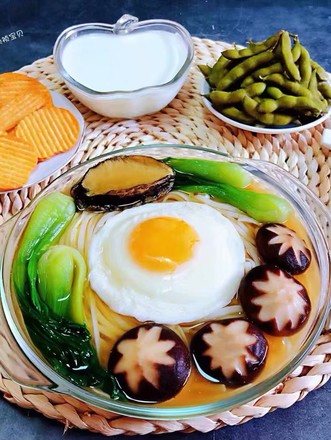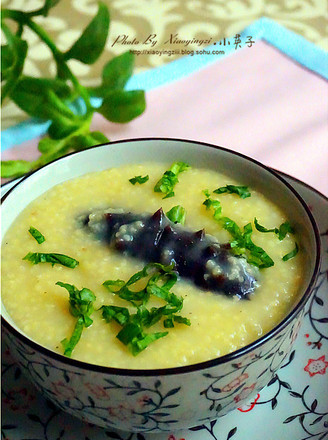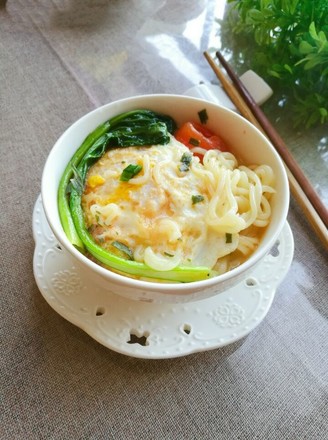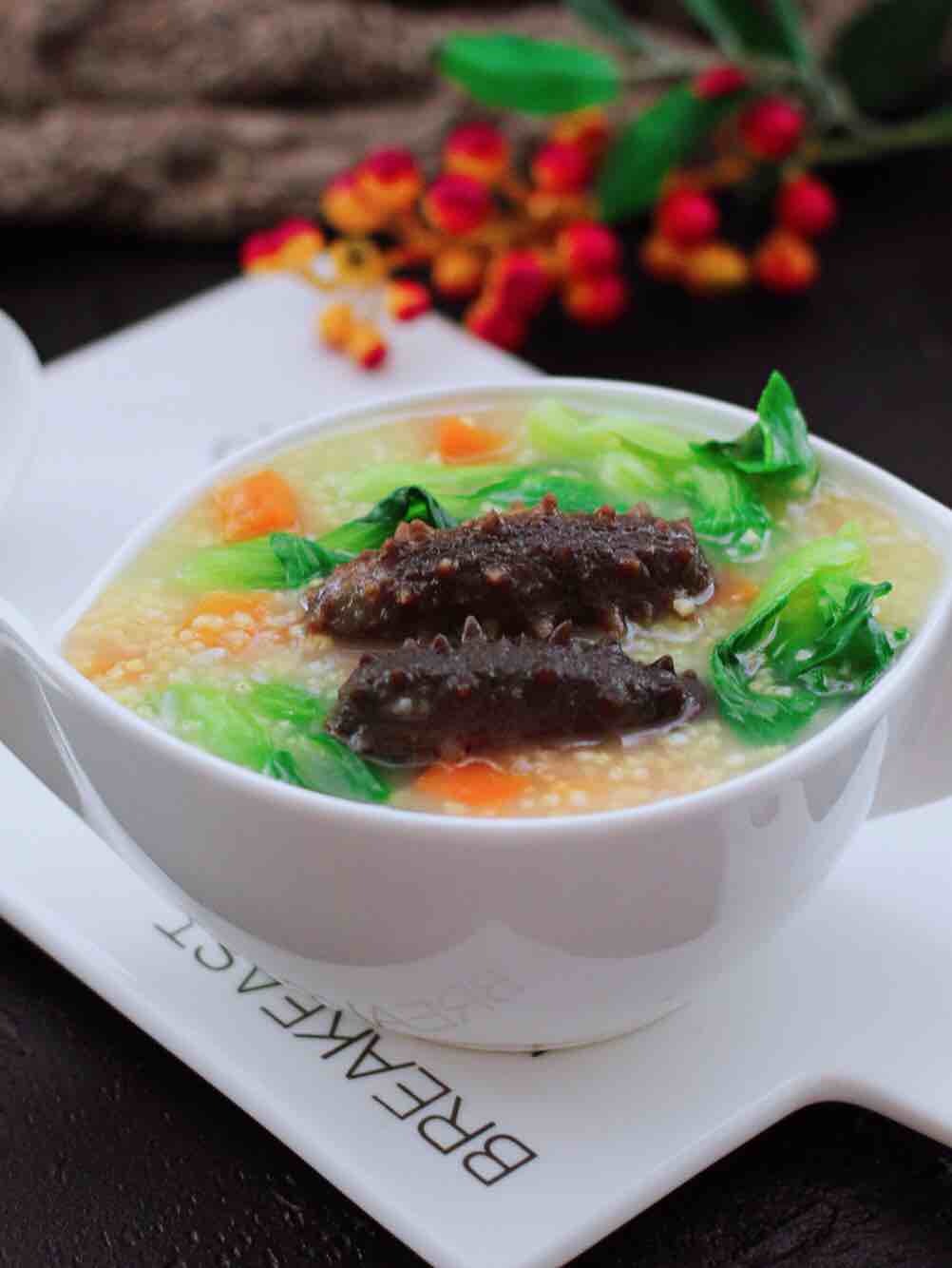Sichuan Kimchi
by barbaragaoyun
Favorite
Difficulty
Normal
Time
48h
Serving
2
Human wisdom is fully reflected in the storage of food. Fermented food is one of the most exciting creations. Among them, kimchi is probably the most well-known one.
There is no other ingredient that can be as varied as kimchi. It can be leisurely soaked in sauerkraut vermicelli soup, sour radish and old duck soup for a while to wash out its own sourness, and then it will be a cameo in fish-flavored shredded pork but it is accidentally set. The key to the taste, after a while, the lead will be washed away, lying obediently at the bottom of the bowl and becoming the "magic product" of serving rice. It seems that it and each ingredient can deduce a different delicacy without losing its own unique taste.
In Sichuan, to see whether a housewife is diligent or not, you only need to look at her kimchi jar. It is strange to say that kimchi is a kind of character that is very characterful. Some people can succeed when they make it for the first time, and some people make it no matter how they do it. If you don’t make delicious kimchi, this is the so-called "smelly hand". My mother said that in the past, it was difficult for this kind of woman to marry a good family. It seemed that she couldn't make delicious kimchi, and she couldn't be regarded as a qualified Sichuan woman.
Generally speaking, there are bath kimchi, old sauerkraut, pickled ginger, pickled sea pepper, etc. These are not allowed to be mixed and soaked together. Therefore, people who are particular about it have many kimchi jars of various sizes, and they will We are proud of the large number of kimchi jars. The kimchi in the bath is the kimchi that can be eaten directly after soaking in a jar for one or two days. It is usually packed in a glass jar for easy consumption. The soaking is made of some easy-to-ripen seasonal vegetables, such as radish and green bamboo shoots. Vegetables such as lettuce and cucumbers with too much moisture usually don’t even enter the jars. Cut them directly and put them in a bowl with a lid, pour in salt water, and marinate overnight. The taste is excellent. And it will not spoil the brine; the old sauerkraut is usually made of radishes and green vegetables. It usually takes at least two or three months to soak for a long time or even several decades. Because of its sour taste, it is usually not eaten directly, but it is made. The most important seasonings in Sichuan cuisine, pickled cabbage fish and sour radish and old duck soup are extremely well-known representative dishes; pickled ginger and pickled sea pepper are favorite condiments of Sichuan people. They usually appear together, but they must never be brewed together. Otherwise, The sea pepper will become so soft that only empty skin is left.
The longer the kimchi water is used, the more soaked things, the more fragrant the taste, the richer the active substances, and the faster the kimchi matures. The kimchi water of each family is basically handed down from generation to generation. It is said that grandma’s kimchi water is at least 140 Years of history, through this small jar of kimchi, passed down our tradition in this humble way.
Picking up white flowers is probably the biggest headache for everyone who has pickled cabbage. At the beginning of making kimchi, the jars were often filled with white flowers without paying attention. Later, by consulting experienced seniors, I mastered many coups to eliminate white flowers.
Like all pickled vegetables, kimchi must not be dipped in oil and raw water. When dipped in oil, kimchi water will be broken, but when dipped in raw water, it will produce flowers. Kimchi oil is easier to avoid, but raw water is difficult. After the kimchi is washed, use an oil-free and water-free bamboo vegetable basket to dry the surface water in the shade, then put it in the jar, try to avoid bringing raw water into the jar, and then add salt and white wine according to the amount of vegetables, especially white wine , Can effectively eliminate white flowers.
In addition, I have another weapon that can completely eliminate white flowers-bamboo shoots. I don't remember where I saw this little recipe. After the first attempt, it was really shocking. I have made kimchi many times, but no white flowers appeared when I added bamboo shoots. Regarding the choice of bamboo shoots, be sure to choose fresh bamboo shoots. Many bamboo shoots have a bitter taste, but since there is no need to put a particularly large amount, there is no need to worry about the bitterness of the kimchi water.
In addition to the most basic salt, white wine and cold boiled water, other auxiliary materials are the key to the unique taste that is unique to you. Basically, pepper is essential. The most common one is "Dahongpao" red pepper. Nowadays, green pepper is also popular. Our family is accustomed to using fresh red pepper, which has a hint of flavor in the spicy.
Spices are also indispensable, but the amount must not be large, otherwise it will grab the original aroma of the food. You don't need to add too much for the first time. You can add some every few months, one star anise, one bay leaf, a few cloves, one Small knots of cinnamon, a pinch of cumin, one sana, and a small half of the fruit can be wrapped in gauze, but I prefer to let the spices float in the water one by one, quietly showing its beauty.
Sichuanese people are addicted to spiciness. Hot and sour is a very popular taste recently. If you like spicy, you can add a few millet and wild pepper to it, but you must not cut off the stalks, otherwise the pepper will turn into soon. The shell is empty.
Nowadays, most of the liquor is fermented, but in fact, it is more traditional to mix liquor and glutinous rice. The glutinous rice makes the food ferment faster and has a unique sweetness; while the white wine can be sterilized while being fermented, it can prevent white flowers. The two functions make up for each other, and neither is indispensable.
The really delicious kimchi should have a sweet aftertaste in addition to the sour taste. My grandmother added brown sugar and sugar cane to my recipe, but sugar cane is the same as bamboo shoots. It is best to put in the kimchi after the kimchi is ready, so as not to get too much water in the kimchi water and fail to ferment successfully.
My favorite material for kimchi-Canniu Niu, also known as Di Canniu, is a very traditional Sichuan vegetable, but it is difficult to buy now in many places. Canniu Niu kimchi has a crisp taste and does not need to be soaked for a long time. It is sour, so as not to cover up its own sweetness. "
There is no other ingredient that can be as varied as kimchi. It can be leisurely soaked in sauerkraut vermicelli soup, sour radish and old duck soup for a while to wash out its own sourness, and then it will be a cameo in fish-flavored shredded pork but it is accidentally set. The key to the taste, after a while, the lead will be washed away, lying obediently at the bottom of the bowl and becoming the "magic product" of serving rice. It seems that it and each ingredient can deduce a different delicacy without losing its own unique taste.
In Sichuan, to see whether a housewife is diligent or not, you only need to look at her kimchi jar. It is strange to say that kimchi is a kind of character that is very characterful. Some people can succeed when they make it for the first time, and some people make it no matter how they do it. If you don’t make delicious kimchi, this is the so-called "smelly hand". My mother said that in the past, it was difficult for this kind of woman to marry a good family. It seemed that she couldn't make delicious kimchi, and she couldn't be regarded as a qualified Sichuan woman.
Generally speaking, there are bath kimchi, old sauerkraut, pickled ginger, pickled sea pepper, etc. These are not allowed to be mixed and soaked together. Therefore, people who are particular about it have many kimchi jars of various sizes, and they will We are proud of the large number of kimchi jars. The kimchi in the bath is the kimchi that can be eaten directly after soaking in a jar for one or two days. It is usually packed in a glass jar for easy consumption. The soaking is made of some easy-to-ripen seasonal vegetables, such as radish and green bamboo shoots. Vegetables such as lettuce and cucumbers with too much moisture usually don’t even enter the jars. Cut them directly and put them in a bowl with a lid, pour in salt water, and marinate overnight. The taste is excellent. And it will not spoil the brine; the old sauerkraut is usually made of radishes and green vegetables. It usually takes at least two or three months to soak for a long time or even several decades. Because of its sour taste, it is usually not eaten directly, but it is made. The most important seasonings in Sichuan cuisine, pickled cabbage fish and sour radish and old duck soup are extremely well-known representative dishes; pickled ginger and pickled sea pepper are favorite condiments of Sichuan people. They usually appear together, but they must never be brewed together. Otherwise, The sea pepper will become so soft that only empty skin is left.
The longer the kimchi water is used, the more soaked things, the more fragrant the taste, the richer the active substances, and the faster the kimchi matures. The kimchi water of each family is basically handed down from generation to generation. It is said that grandma’s kimchi water is at least 140 Years of history, through this small jar of kimchi, passed down our tradition in this humble way.
Picking up white flowers is probably the biggest headache for everyone who has pickled cabbage. At the beginning of making kimchi, the jars were often filled with white flowers without paying attention. Later, by consulting experienced seniors, I mastered many coups to eliminate white flowers.
Like all pickled vegetables, kimchi must not be dipped in oil and raw water. When dipped in oil, kimchi water will be broken, but when dipped in raw water, it will produce flowers. Kimchi oil is easier to avoid, but raw water is difficult. After the kimchi is washed, use an oil-free and water-free bamboo vegetable basket to dry the surface water in the shade, then put it in the jar, try to avoid bringing raw water into the jar, and then add salt and white wine according to the amount of vegetables, especially white wine , Can effectively eliminate white flowers.
In addition, I have another weapon that can completely eliminate white flowers-bamboo shoots. I don't remember where I saw this little recipe. After the first attempt, it was really shocking. I have made kimchi many times, but no white flowers appeared when I added bamboo shoots. Regarding the choice of bamboo shoots, be sure to choose fresh bamboo shoots. Many bamboo shoots have a bitter taste, but since there is no need to put a particularly large amount, there is no need to worry about the bitterness of the kimchi water.
In addition to the most basic salt, white wine and cold boiled water, other auxiliary materials are the key to the unique taste that is unique to you. Basically, pepper is essential. The most common one is "Dahongpao" red pepper. Nowadays, green pepper is also popular. Our family is accustomed to using fresh red pepper, which has a hint of flavor in the spicy.
Spices are also indispensable, but the amount must not be large, otherwise it will grab the original aroma of the food. You don't need to add too much for the first time. You can add some every few months, one star anise, one bay leaf, a few cloves, one Small knots of cinnamon, a pinch of cumin, one sana, and a small half of the fruit can be wrapped in gauze, but I prefer to let the spices float in the water one by one, quietly showing its beauty.
Sichuanese people are addicted to spiciness. Hot and sour is a very popular taste recently. If you like spicy, you can add a few millet and wild pepper to it, but you must not cut off the stalks, otherwise the pepper will turn into soon. The shell is empty.
Nowadays, most of the liquor is fermented, but in fact, it is more traditional to mix liquor and glutinous rice. The glutinous rice makes the food ferment faster and has a unique sweetness; while the white wine can be sterilized while being fermented, it can prevent white flowers. The two functions make up for each other, and neither is indispensable.
The really delicious kimchi should have a sweet aftertaste in addition to the sour taste. My grandmother added brown sugar and sugar cane to my recipe, but sugar cane is the same as bamboo shoots. It is best to put in the kimchi after the kimchi is ready, so as not to get too much water in the kimchi water and fail to ferment successfully.
My favorite material for kimchi-Canniu Niu, also known as Di Canniu, is a very traditional Sichuan vegetable, but it is difficult to buy now in many places. Canniu Niu kimchi has a crisp taste and does not need to be soaked for a long time. It is sour, so as not to cover up its own sweetness. "

